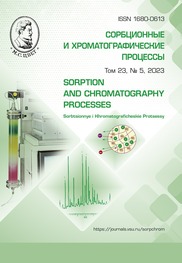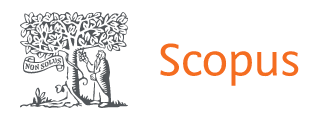Об особенностях строения активного центра и четвертичной структуры инулиназ
Аннотация
В настоящее время многие исследователи стали обращать внимание на то, что не только традиционные сорбенты и ионообменники, но и ряд природных компонентов, содержащихся в растительных и животных организмах, обладают способностью поглощать другие органические молекулы и ионы, вступать в реакции комплексообразования с ионами металлов, проявлять каталитические свойства. К таким природным веществам, обладающим сорбционными и ионообменными свойствами, можно отнести аминополисахариды (хитин, хитозан), нуклеиновые и рибонуклеиновые кислоты, сапонины, ферменты. Приведенный перечень веществ можно отнести к высокомолекулярным соединениям, обладающим сорбционными, лигандными и каталитическими свойствами. В настоящей работе приводятся результаты исследования функциональных групп активного центра инулиназы и особенностей ее четвертичной структуры. Установлено, что фермент имеет четвертичную структуру, представленную двумя субъединицами с Mr 76900 Да и 10140 Да, обладающими каталитической активностью. В образовании фермент-субстратного комплекса принимают участие имидазольный радикал гистидина, SH-группы и карбоксильные группы. Целью данной работы явилось изучение функциональных групп активного центра и некоторых особенностей четвертичной структуры инулиназы.
В настоящей работе использован препарат инулиназы, выделенной из Aspergillus awamori Ц2250, очищенный методом ионообменной хроматографии на колонках с диэтиламиноэтилцеллюлозой (ДЭАЭ): [-O-(CH2)2-N(C2H5)2]. Гомогенность препарата была подтверждена методом гель-электрофореза. Каталитическая активность инулиназы определялась на субстрате инулине (Spofa, Чехия) спектрофотометрически с помощью резорцина при λ=540 нм, а молекулярная масса – методом гель-хроматографии на Сефадексе G-200. Наличие электрофильных групп СОО- устанавливали по методу Диксона, а также методом ИК-спектроскопии на приборе Vertex-70 в интервале частот 4000-400 см-1.
В состав активного центра фермента входят γ и δ-карбоксильные группы остатков аспарагиновой и глутаминовой кислот соответственно. Ион водорода Н+ отщепляется от карбоксильной группы глутаминового остатка фермента и связывается с кислородом, соединяющим кольца А и Б субстрата. В результате связь кислорода с кольцом разрывается, а углерод, находящийся в положении I кольца А, образует карбониевый ион, который стабилизируется СОО--группой аспарагинокислого остатка фермента. С карбониевым ионом взаимодействует ОН--ион, доставляемый молекулой воды, а Н+-ион воды фиксируется на место Н+-иона, потерянного глутаминокислым остатком в инулиназе. После этого молекулы инулина покидают фермент, освобождая его для последующей реакции с субстратом. Однако данный механизм не является единственным. В образовании фермент-субстратного комплекса также принимает участие имидазол гистидина. При взаимодействии с инулином имидазольная группа связывается водородной связью с кислородом, соединяющим кольца А и Б субстрата. Происходит также ориентация СОО- иона фермента относительно образующегося карбониевого иона в кольце А. В последующем ионы Н+ и ОН- из молекул воды фиксируются в инулиназе на место Н+, потерянного Glu, а ОН- на карбониевом ионе инулина.
Скачивания
Литература
Zherebtsov N.A., Popova T.N., Artyukhov V.G. Biokhimiya. Voronezh, VGU, 2002, 696 р. (In Russ.)
Kovaleva T.A., Kholyavka M.G. Is-sledovanie struktur nykhosobennostei inulinaz iz razlichnykh produtsentov metodom IK-spektrofotometrii. Voprosy biologicheskoi, meditsinskoi I farmatsev-ticheskoi khimii. 2011; 1: 3-7. (In Russ.)
Mironenko N.V., Selemenev V.F., Artyukhov V.G., Lavrinenko I.A. Saponiny. Voronezh, Izdatel'sko-poligraficheskii tsentr «Nauchnaya kniga», 2019, 205 р. (In Russ.)
Lenindzher A. Biokhimiya. Molekulyarnye osnovy struktury i funktsii kletki. M., Mir. 1976; 957 р. (In Russ.)
Kholyavka M.G., Kovaleva T.A., Grechkina M.V., Ostankova I.V., Artyukhov V.G. Osobennosti struktury inulinaz razlichnogo proiskhozhdeniya. Prikladnaya biokhimiya I mikrobiologiya. 2014; 1: 17-24. (In Russ.)
Tyukavkina N.A. Bioorganicheskaya khimiya. M., Drofa, 2004, 544 р. (In Russ.)
Ettalibi M. Molecular and kinetic properties of Aspergillus ficuuminulinases. Agric. Biol. Chem. 1990; 54: 61-68.
Thannhauser T.W., Konishi Y., Scheraga H.A. Sensitive quantitative analysis of disulfide bonds in polypeptides and proteins. Analytical biochemistry. 1984; 138(1): 181-188.
Singh R.S., Chauhana K., Kennedy J.F. A panorama of bacterial inulinases: production, purification, characterization and industrial applications. International Journal of Biological Macromolecules. 2017; 96: 312-322.
Treichel H., Oliveira D., Lerin L., Astolfi V., Mazutti M.A., Di Luccio M., Oliveira J.V. A review on the production and partial characterization of microbial inulinases.Global Journal of Biochemistry. 2012; 3: 1-13.
Nagem R.A.P., Rojas A.L, Golubev A.M., Korneeva O.S., Eneyskaya E.V., Kulminskaya A.A., Neustroev K.N., Polikarpov I. Crystal structure of exoin-ulinase from Aspergillus awamori : the en-zyme fold and structural determinants of substrate recognition. J. Mol. Biol. 2004; 344 (11): 471-480.
Wen T., Liu F., Huo K., Li Y.-Y. Cloning and analysis of the inulinase gene from Kluyveromyces cicerisporus CBS4857.World Journal of Microbiology & Biotechnology. 2003; 19: 423-426.
Adawiyah S.R., Shuhaimi M., MohdYazid A.M., Abdul Manaf A., Rosli N., Sreeramanan S. Molecular cloning and sequence analysis of an inulinase gene from an Aspergillus sp. World J. Microbiol. Biotechnol. 2011; 27: 2173-2185.
Ji Y., Zhao X.Purification and prop-erties of inulinases from Aspergillus niger M89. Wei Sheng Wu XueBao. 1998; 38 (2): 120-125.
Shiomi N., Onodera S., Chatterton N.J., Harrison P.A. Separation of fructooli-gosaccharide isomers by anion-exchange chromatography. Agric Biol Chem. 1991; 55: 1427-1428.
Karrer P. Kurs organicheskoi khimii. Leningrad, Khimicheskaya literatura, 1962, 1216 р.
Kim K.Y. Role of the N-terminal domain of endoinulinase from Arthrobacter sp. S37 in regulation of enzyme catalysis. J. Biochem. 2005; 138: 27-33.
Ji Y. Zhao X. Purification and properties of inulinases from Aspergillus niger M89.Wei Sheng Wu XueBao. 1998; 38 (2): 120-125.
Pouyez J., Mayard A., Vandamme A.M., Roussel G., Perpète E.A., Wouters J., Housen I., Michaux C. First crystal struc-ture of an endo-inulinase, INU2, from As-pergillus ficuum: discovery of an extra-pocket in the catalytic domain responsible for its endoactivity. Biochimie. 2012; 94 (11): 2423-2430.
Gao J., Xu Y.Y., Yang H.M., Xu H., Xue F., Li S., Feng X.H. Gene cloning, ex-pression, and characterization of an exo-inulinase from Paenibacillus polymyxa ZJ-9. Applied Biochemistry and Biotechnology. 2014; 173: 1419-1430.
Zhang S., Yang F., Wang Q., Hua Y., Zhao Z.K. High-level secretory expression and characterization of the recombinant. Kluyveromy cesmarxianus inulinase. Process Biochemistry. 2012; 47: 151-155.
Wang L., Huang Y., Long X., Meng X., Liu Z. Cloning of exoinulinase gene from Penicillium janthinellum strain B01 and its high-level expression in Pichia pas-toris. J. Appl. Microbiol. 2011; 111: 1371-1380.
Kim K.Y., Rhee S., Kim S.I. Role of the N-terminal domain of endoinulinase from Arthrobacter sp. S37 in regulation of enzyme catalysis. J. Biochem. 2005; 138: 27-33.
Kushi R.T., Monti R., Con-tieroJ.Production, purification and charac-terization of an extracellular inulinase from Kluyveromyces marxianus var. bulgaricus. J. Indust. Microbiol. Biotechnol. 2000; 25: 63-69.
Dikson M., Uebb E. Fermenty. Vol. 1. M., Mir, 1970, 252 р.
Determan G. Gel'-khromatografiya. M., Mir, 1970, 252 р.
Mustafaev R.M. Avtoref. diss. kand. tekhn. nauk. Voronezh, 1991, 24 р.
Keleti T. Osnovy fermentativnoi ki-netiki. M., Mir, 1990, 347 р.
Torchinskii Yu.M. Sera v belkakh. M., Nauka, 1977, 302 р.
Poltorak O.M., Chuhraj E.S. Fiziko-himicheskie osnovy fermentativnogo kataliza. M., Vysshaja shkola, 1971, 360 р.
Tsundel' G. Gidratatsiya i mezhmo-lekulyarnoe vzaimodeistvie. M., Mir, 1972, 404 р.
Dekhant I., Dants R. Infrakrasnaya spektroskopiya polimerov. M., Khimiya, 1976, 471 р.
Kazicina L.A., Kupletskaja N.B. Primenenie UF-, IK- i JMR-spektroskopii v organicheskoj himii. M., Vysshaja shkola, 1971, 264 р. (In Russ.)
Ugljanskaja V.A., Chikin G.A., Selemenev V.F., Zav'jalova T.A. Infrakrasnaja spektroskopija ionoobmennyh materialov. Voronezh, Izd-vo VSU, 1989, 208 р. (In Russ.)








